BMW X5 vs Kia Sportage – Which one offers the better deal?
Two cars, one duel: BMW X5 meets Kia Sportage.
Which one wins in performance, efficiency and value for money? Find out now!
Costs and Efficiency:
Price and efficiency are key factors when choosing a car – and this is often where the real differences emerge.
Kia Sportage has a decisively advantage in terms of price – it starts at 29700 £, while the BMW X5 costs 77100 £. That’s a price difference of around 47323 £.
Fuel consumption also shows a difference: BMW X5 manages with 0.80 L and is therefore decisively more efficient than the Kia Sportage with 1.20 L. The difference is about 0.40 L per 100 km.
As for range, the BMW X5 performs evident better – achieving up to 105 km, about 41 km more than the Kia Sportage.
Engine and Performance:
Power, torque and acceleration say a lot about how a car feels on the road. This is where you see which model delivers more driving dynamics.
When it comes to engine power, the BMW X5 has a clearly edge – offering 625 HP compared to 252 HP. That’s roughly 373 HP more horsepower.
In acceleration from 0 to 100 km/h, the BMW X5 is decisively quicker – completing the sprint in 3.90 s, while the Kia Sportage takes 7.90 s. That’s about 4 s faster.
In terms of top speed, the BMW X5 performs slightly better – reaching 250 km/h, while the Kia Sportage tops out at 203 km/h. The difference is around 47 km/h.
There’s also a difference in torque: BMW X5 pulls decisively stronger with 750 Nm compared to 350 Nm. That’s about 400 Nm difference.
Space and Everyday Use:
Cabin size, boot volume and payload all play a role in everyday practicality. Here, comfort and flexibility make the difference.
Both vehicles offer seating for 5 people.
In curb weight, Kia Sportage is convincingly lighter – 1526 kg compared to 2240 kg. The difference is around 714 kg.
In terms of boot space, the BMW X5 offers hardly perceptible more room – 650 L compared to 587 L. That’s a difference of about 63 L.
In maximum load capacity, the BMW X5 performs slight better – up to 1870 L, which is about 94 L more than the Kia Sportage.
When it comes to payload, BMW X5 somewhat takes the win – 705 kg compared to 580 kg. That’s a difference of about 125 kg.
Who wins the race?
The BMW X5 proves to be dominates this comparison and therefore becomes our DriveDuel Champion!
BMW X5 is the better all-rounder in this comparison.

BMW X5
BMW X5
The BMW X5 embodies a perfect blend of luxury and performance, offering a driving experience that is both dynamic and comfortable. Its elegant design is complemented by a spacious, high-quality interior that prioritises driver and passenger comfort. Advanced technology features ensure that the X5 meets the demands of modern drivers, providing both entertainment and safety on the road.
details @ press.bmwgroup.com
@ press.bmwgroup.com
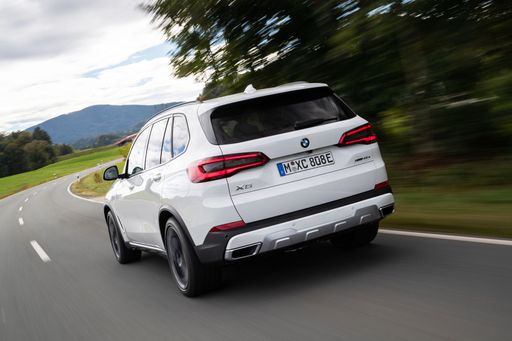 @ press.bmwgroup.com
@ press.bmwgroup.com
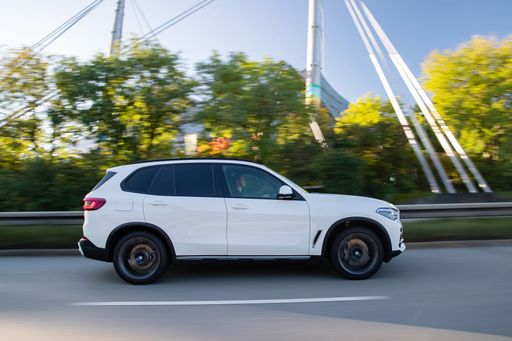 @ press.bmwgroup.com
@ press.bmwgroup.com
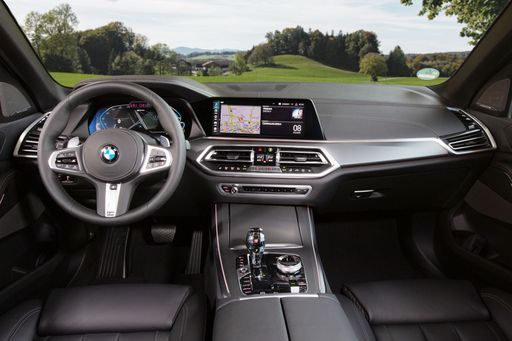 @ press.bmwgroup.com
@ press.bmwgroup.com
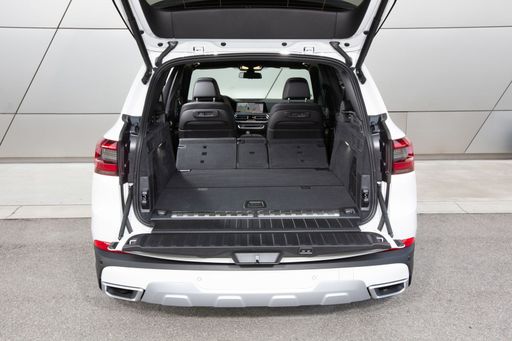 @ press.bmwgroup.com
@ press.bmwgroup.com
Kia Sportage
The Kia Sportage stands out in the crowded SUV market with its elegant design and advanced features. This vehicle offers a refined driving experience, combining comfort with responsive handling. Inside, the Sportage boasts a well-appointed cabin that provides ample space for passengers and luggage, making it an ideal choice for both city driving and longer journeys.
details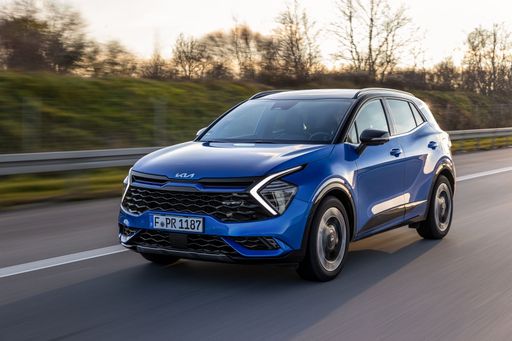 @ press.kia.com
@ press.kia.com
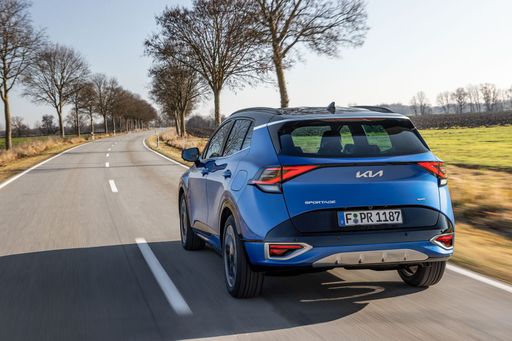 @ press.kia.com
@ press.kia.com
 @ press.kia.com
@ press.kia.com
 @ press.kia.com
@ press.kia.com

|

|
|
|
|
Costs and Consumption |
|
|---|---|
|
Price
77100 - 143500 £
|
Price
29700 - 44700 £
|
|
Consumption L/100km
0.8 - 12.8 L
|
Consumption L/100km
1.2 - 7.9 L
|
|
Consumption kWh/100km
-
|
Consumption kWh/100km
-
|
|
Electric Range
105 km
|
Electric Range
64 km
|
|
Battery Capacity
25.70 kWh
|
Battery Capacity
-
|
|
co2
19 - 289 g/km
|
co2
28 - 180 g/km
|
|
Fuel tank capacity
69 - 83 L
|
Fuel tank capacity
42 - 54 L
|
Dimensions and Body |
|
|---|---|
|
Body Type
SUV
|
Body Type
SUV
|
|
Seats
5
|
Seats
5
|
|
Doors
5
|
Doors
5
|
|
Curb weight
2240 - 2495 kg
|
Curb weight
1526 - 1905 kg
|
|
Trunk capacity
500 - 650 L
|
Trunk capacity
526 - 587 L
|
|
Length
4935 - 4948 mm
|
Length
4515 - 4540 mm
|
|
Width
2004 - 2015 mm
|
Width
1865 mm
|
|
Height
1755 - 1765 mm
|
Height
1645 - 1650 mm
|
|
Max trunk capacity
1720 - 1870 L
|
Max trunk capacity
1715 - 1776 L
|
|
Payload
565 - 705 kg
|
Payload
510 - 580 kg
|
Engine and Performance |
|
|---|---|
|
Engine Type
Plugin Hybrid, Petrol MHEV, Diesel MHEV
|
Engine Type
Diesel MHEV, Petrol MHEV, Full Hybrid, Petrol, Plugin Hybrid
|
|
Transmission
Automatic
|
Transmission
Manuel, Automatic
|
|
Transmission Detail
Automatic Gearbox
|
Transmission Detail
Manual Gearbox, Dual-Clutch Automatic, Automatic Gearbox
|
|
Drive Type
All-Wheel Drive
|
Drive Type
Front-Wheel Drive, All-Wheel Drive
|
|
Power HP
298 - 625 HP
|
Power HP
136 - 252 HP
|
|
Acceleration 0-100km/h
3.9 - 6.1 s
|
Acceleration 0-100km/h
7.9 - 11.6 s
|
|
Max Speed
233 - 250 km/h
|
Max Speed
180 - 203 km/h
|
|
Torque
540 - 750 Nm
|
Torque
250 - 350 Nm
|
|
Number of Cylinders
6 - 8
|
Number of Cylinders
4
|
|
Power kW
219 - 460 kW
|
Power kW
100 - 185 kW
|
|
Engine capacity
2993 - 4395 cm3
|
Engine capacity
1598 cm3
|
General |
|
|---|---|
|
Model Year
2023 - 2025
|
Model Year
2024 - 2025
|
|
CO2 Efficiency Class
B, G
|
CO2 Efficiency Class
D, E, F, B, G
|
|
Brand
BMW
|
Brand
Kia
|
Is the BMW X5 offered with different drivetrains?
The BMW X5 is available as All-Wheel Drive.
The prices and data displayed are estimates based on German list prices and may vary by country. This information is not legally binding.
